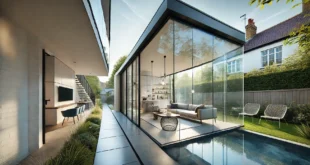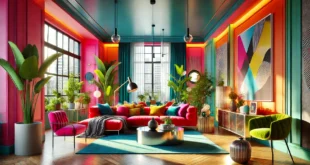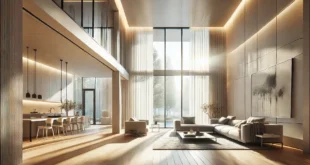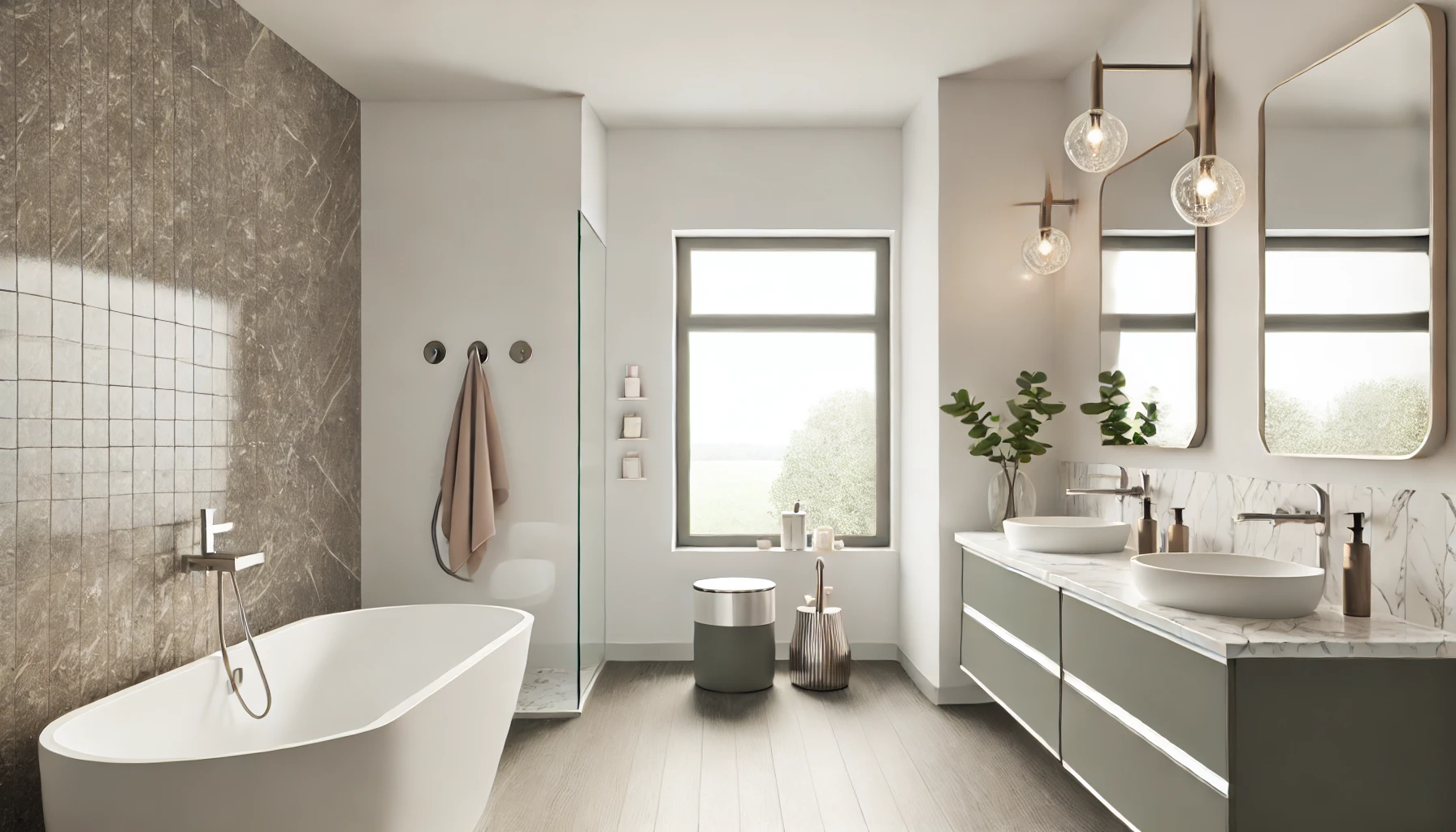
Welcome, esteemed readers, to this comprehensive guide on bathroom design ideas. Your bathroom is more than just a functional space—it’s a sanctuary, a place where you can relax and rejuvenate. Whether you’re planning a full-scale renovation or looking for simple updates to elevate your bathroom’s aesthetics, this article is designed to inspire and guide you toward achieving a space that reflects both style and practicality. In today’s fast-paced world, the importance of having a well-designed, comfortable bathroom cannot be overstated. It’s one of the most used rooms in any home and can significantly impact your daily routines and overall sense of well-being.
Our goal is to provide you with innovative ideas and practical solutions to help you create a bathroom that is not only visually stunning but also functional and tailored to your specific needs. From contemporary designs to more classic and timeless aesthetics, we’ve got you covered. As you read through, you’ll discover various design elements, tips on materials, color palettes, and layout strategies to help you make the best decisions for your bathroom space. You’ll also learn about the advantages of investing in a well-designed bathroom and how it can increase the value of your home.
By the end of this article, you’ll have a clear vision of the bathroom design that suits your lifestyle and preferences. So, without further ado, let’s dive into the world of bathroom design ideas and turn your dream space into reality. But before we proceed, a heartfelt thank you for choosing this guide as your go-to resource for bathroom design inspiration.
Introduction to Modern Bathroom Design
Why Bathroom Design Matters
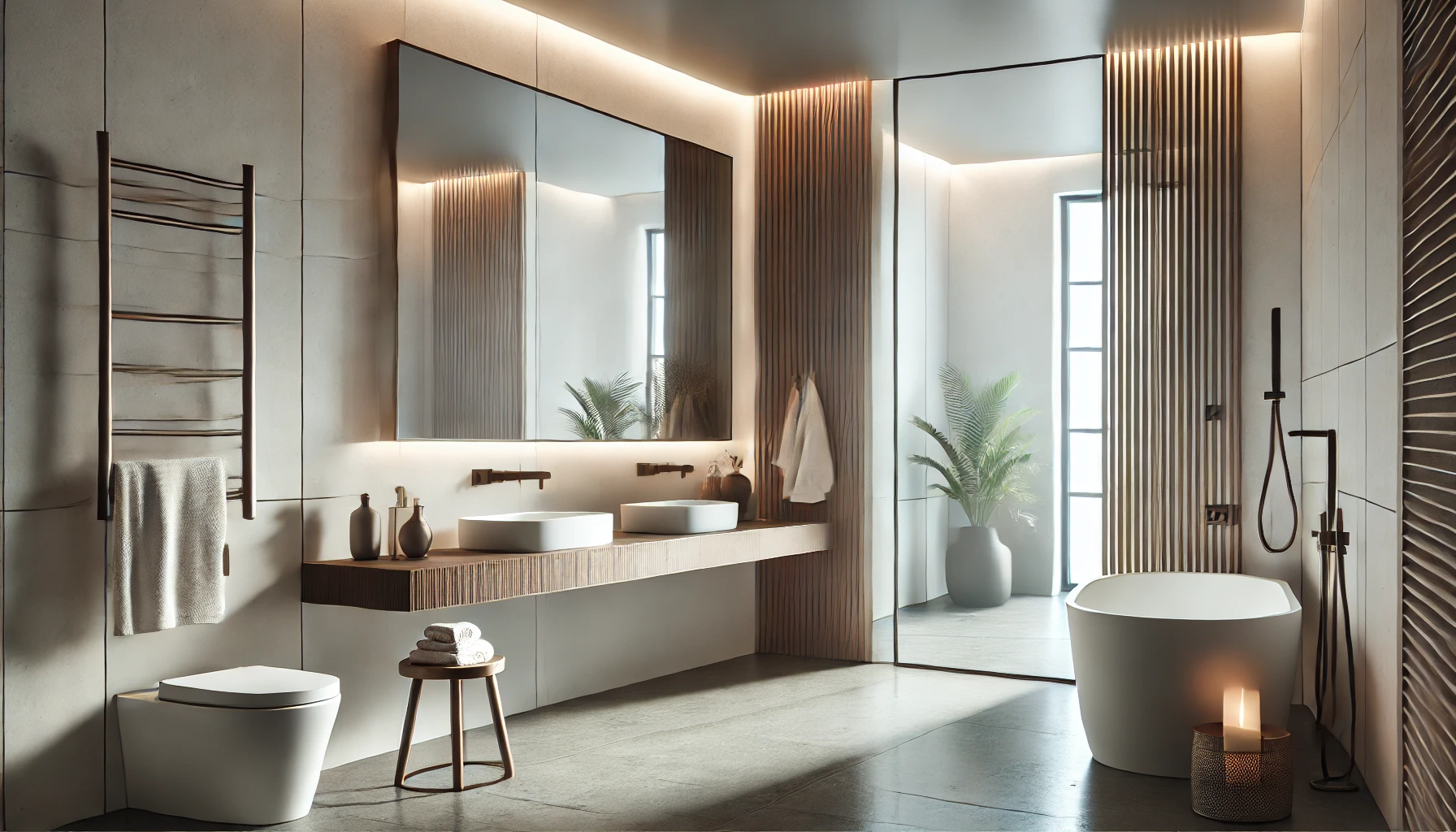
In the fast-paced world we live in, the bathroom has evolved from a purely functional space to a personal sanctuary. Modern bathroom design is not just about aesthetics; it’s about creating a harmonious balance between beauty, functionality, and comfort. As homes become more of a reflection of individual style, the bathroom is one area where homeowners can truly express their design preferences while ensuring that it serves their daily needs. The integration of sleek materials, smart technologies, and eco-conscious elements makes modern bathrooms highly desirable.
A bathroom is often the first place you visit in the morning and the last before bed, making its design impactful on your daily routine. A well-designed bathroom should cater to these everyday activities, providing both relaxation and efficiency. Whether you are doing a complete renovation or a small upgrade, modern design concepts will help you rethink your space.
Modern bathrooms prioritize clean lines, minimalism, and innovative materials. This approach makes the space feel larger, more organized, and inviting. Contemporary designs also take sustainability into account, incorporating energy-efficient lighting, water-saving fixtures, and sustainable materials to reduce environmental impact. This section explores how to bring modern elegance and practical functionality into your bathroom design project.
The importance of bathroom design becomes even more apparent when considering property value. A well-designed, modern bathroom can increase your home’s market appeal, making it a worthwhile investment. Potential buyers are increasingly looking for luxurious, spa-like bathrooms, and modern design delivers on this expectation.
Choosing the Right Layout
Optimizing Space for Functionality
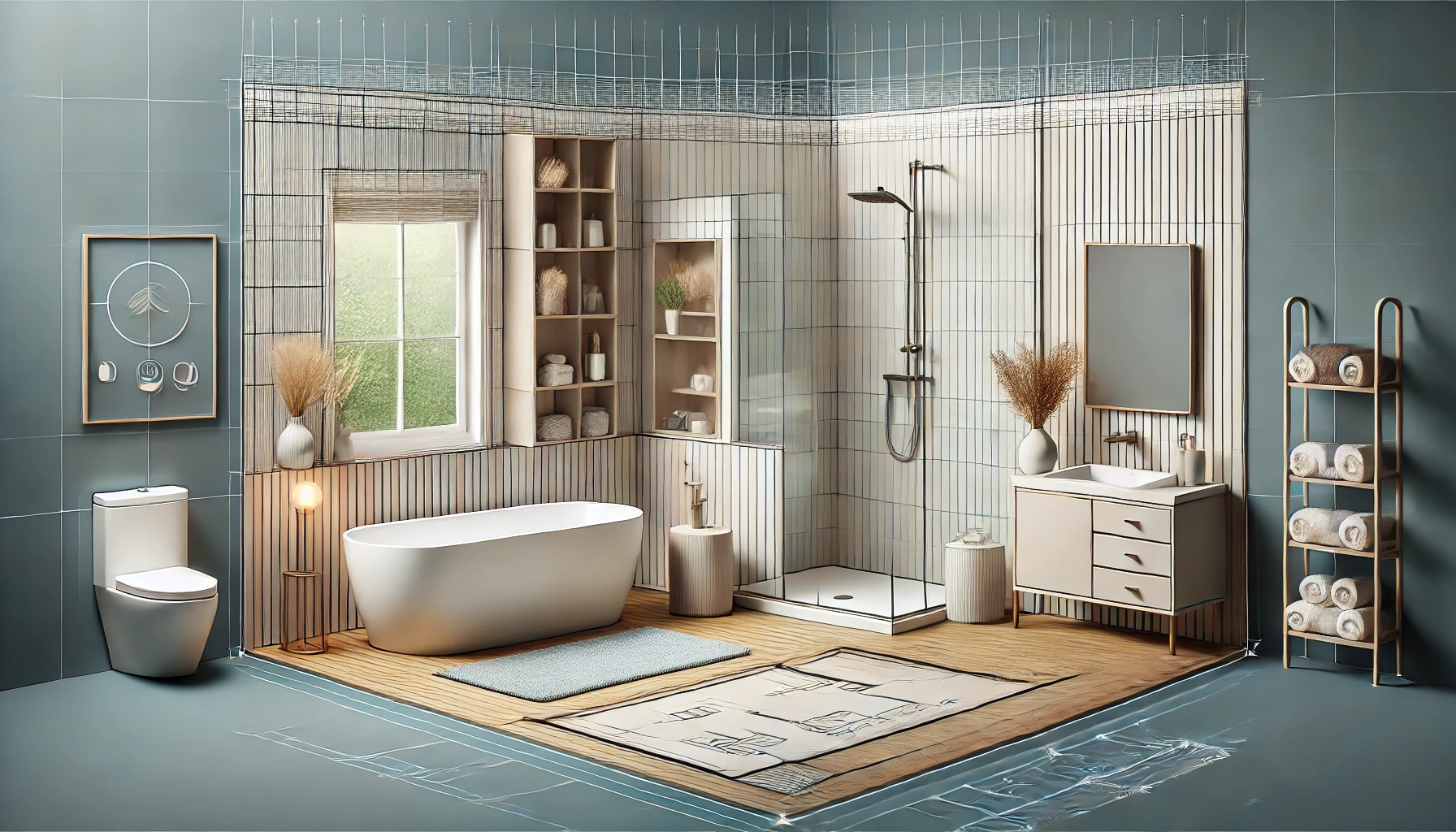
The layout is one of the most crucial aspects of bathroom design. A poorly planned layout can make even the largest bathroom feel cramped, while a well-thought-out arrangement can maximize both space and functionality. When designing or remodeling a bathroom, it’s important to first assess the available space and identify the best ways to use it efficiently.
A good starting point is understanding the traffic flow in your bathroom. Consider where the main fixtures—such as the sink, toilet, and shower—will be located, and how they interact with each other. The layout should allow for easy movement between these areas without causing clutter or congestion. In small bathrooms, the arrangement of fixtures can make a huge difference in how spacious the room feels.
For larger bathrooms, dividing the space into zones can create a more organized and luxurious environment. For example, a freestanding tub can serve as a centerpiece, while separate areas for the shower, toilet, and vanity create a clear distinction between functional spaces. This not only enhances the aesthetics but also the overall experience of using the bathroom.
Another key element of layout is storage. Built-in cabinets, wall-mounted vanities, and recessed shelving can help keep the space clean and organized without sacrificing valuable floor space. These solutions are especially important in small bathrooms, where every inch counts.
It’s also essential to consider plumbing when designing your layout. Moving major fixtures like the toilet or shower may require significant changes to the plumbing system, which can increase the cost of your renovation. In many cases, it’s more cost-effective to work with the existing plumbing layout and make small adjustments to enhance the space.
Color Schemes and Their Impact
Choosing the Perfect Color Palette
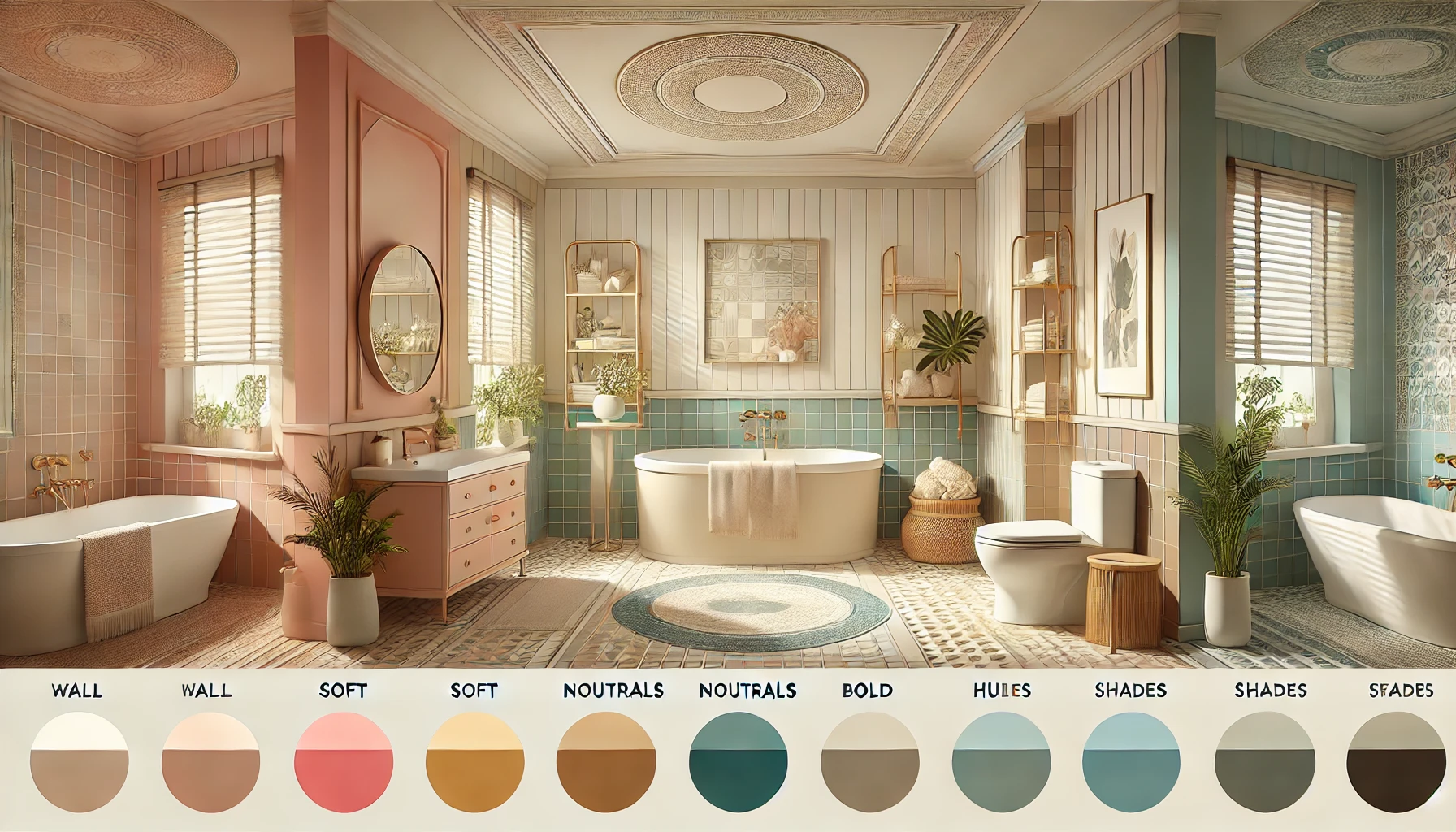 Color is a powerful design tool that can completely transform the look and feel of your bathroom. The right color scheme can make a small bathroom feel more spacious, create a calming atmosphere, or add a bold, dramatic flair to the space. When choosing a color palette for your bathroom, it’s essential to consider the mood you want to create and how the colors will interact with the lighting and materials in the room.
Color is a powerful design tool that can completely transform the look and feel of your bathroom. The right color scheme can make a small bathroom feel more spacious, create a calming atmosphere, or add a bold, dramatic flair to the space. When choosing a color palette for your bathroom, it’s essential to consider the mood you want to create and how the colors will interact with the lighting and materials in the room.
Neutral colors such as white, beige, and gray are popular choices for bathrooms because they create a clean, timeless look that appeals to most homeowners. These colors also reflect light, making the space feel brighter and more open. If you want to add a bit of warmth to your bathroom, soft earth tones like taupe or light brown can create a cozy, inviting atmosphere.
For those looking to make a statement, bold colors like navy blue, emerald green, or even black can add a sense of luxury and sophistication. These colors work particularly well in larger bathrooms, where the darker shades won’t make the space feel too enclosed. Pairing bold colors with metallic fixtures, such as gold or brushed nickel, can create a striking contrast that elevates the overall design.
Another popular trend is the use of pastel colors, such as soft pink, mint green, or pale blue. These shades can create a serene, spa-like atmosphere that is perfect for a relaxing bathroom retreat. Pastels work well in both modern and traditional bathroom designs and can be paired with white or natural wood accents for a fresh, airy look.
Accent colors can also play a significant role in bathroom design. For example, a pop of color in the form of a vibrant tile backsplash, a colorful shower curtain, or decorative accessories can add personality and style to the space without overwhelming it. This approach allows you to keep the overall color scheme neutral while still adding a touch of flair.
Material Selection for Durability and Style
Balancing Aesthetics and Practicality
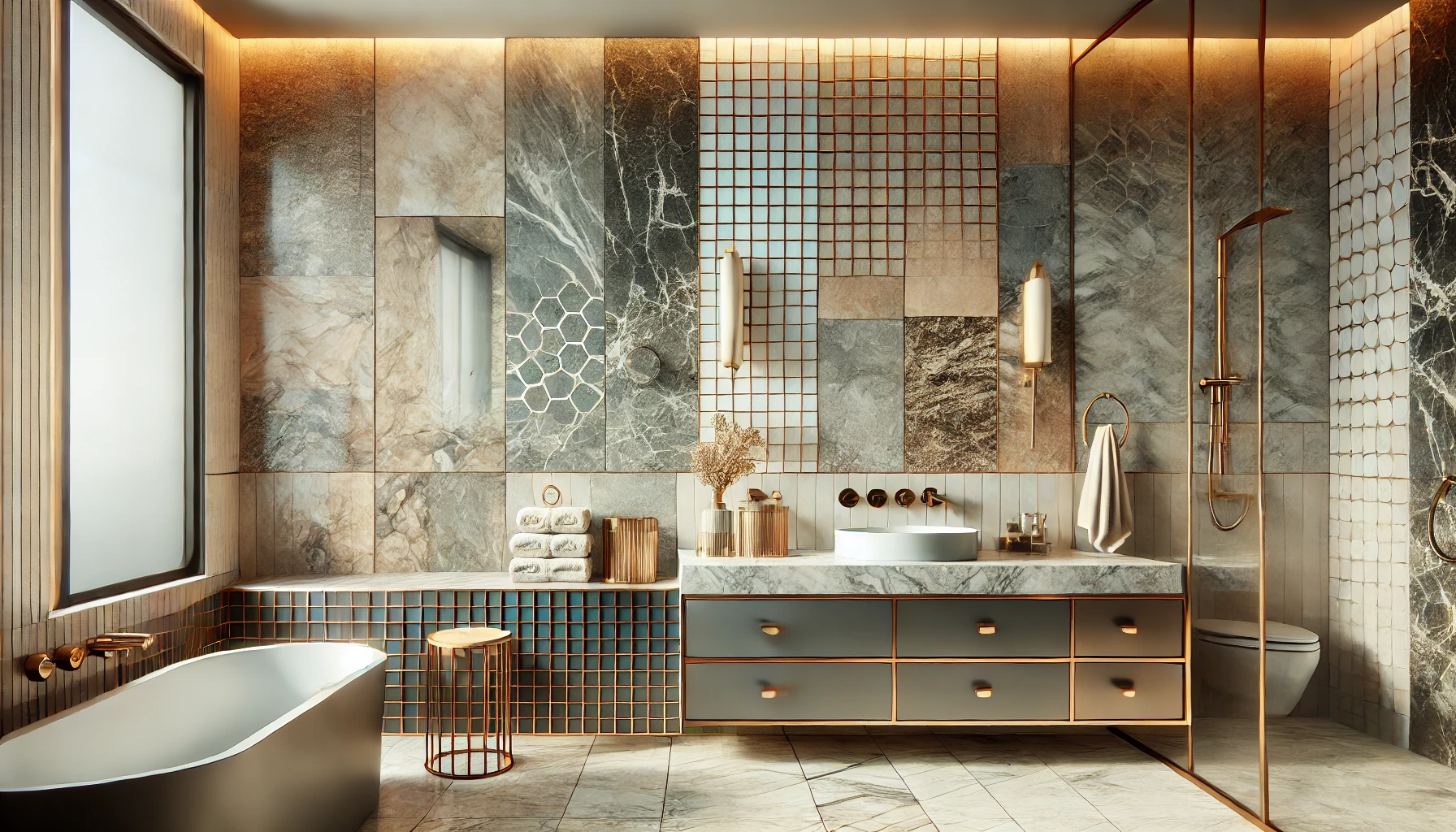
When it comes to bathroom design, selecting the right materials is critical for achieving both style and functionality. Bathrooms are high-traffic areas that are exposed to moisture, heat, and frequent use, so it’s essential to choose materials that are durable and easy to maintain while still complementing your design aesthetic.
Tiles are one of the most popular materials used in bathroom design, and for good reason. Ceramic and porcelain tiles are highly durable, water-resistant, and come in a wide variety of colors, patterns, and finishes. They can be used for flooring, walls, and even shower enclosures. For a more luxurious look, natural stone tiles, such as marble or travertine, can add elegance and sophistication to the space. However, natural stone requires more maintenance than ceramic or porcelain and can be more expensive.
Another important material in bathroom design is the countertop. Quartz and granite are two of the most popular choices for bathroom countertops due to their durability and resistance to stains and moisture. Quartz, in particular, is non-porous, making it easy to clean and maintain. For a more budget-friendly option, laminate or solid surface countertops can also be used, though they may not offer the same level of durability as natural stone.
In addition to tiles and countertops, the choice of fixtures and fittings is equally important. Chrome and stainless steel are popular choices for bathroom fixtures due to their modern look and resistance to rust and corrosion. Brushed nickel and matte black finishes have also become popular in recent years, offering a more contemporary and stylish appearance.
For cabinetry and storage, moisture-resistant materials such as solid wood, MDF (Medium-Density Fiberboard), or laminate are ideal. These materials can withstand the humid conditions often found in bathrooms and are available in a variety of finishes and colors to suit any design style.
Finally, don’t overlook the importance of the shower or bath enclosure. Glass shower doors are a popular choice for creating a modern, open feel, while acrylic or fiberglass shower enclosures offer a more affordable and low-maintenance alternative. If you prefer a more traditional look, a freestanding bathtub made of cast iron or acrylic can add a touch of luxury to the space.
Lighting Solutions for Ambiance and Function
Creating the Perfect Lighting Setup
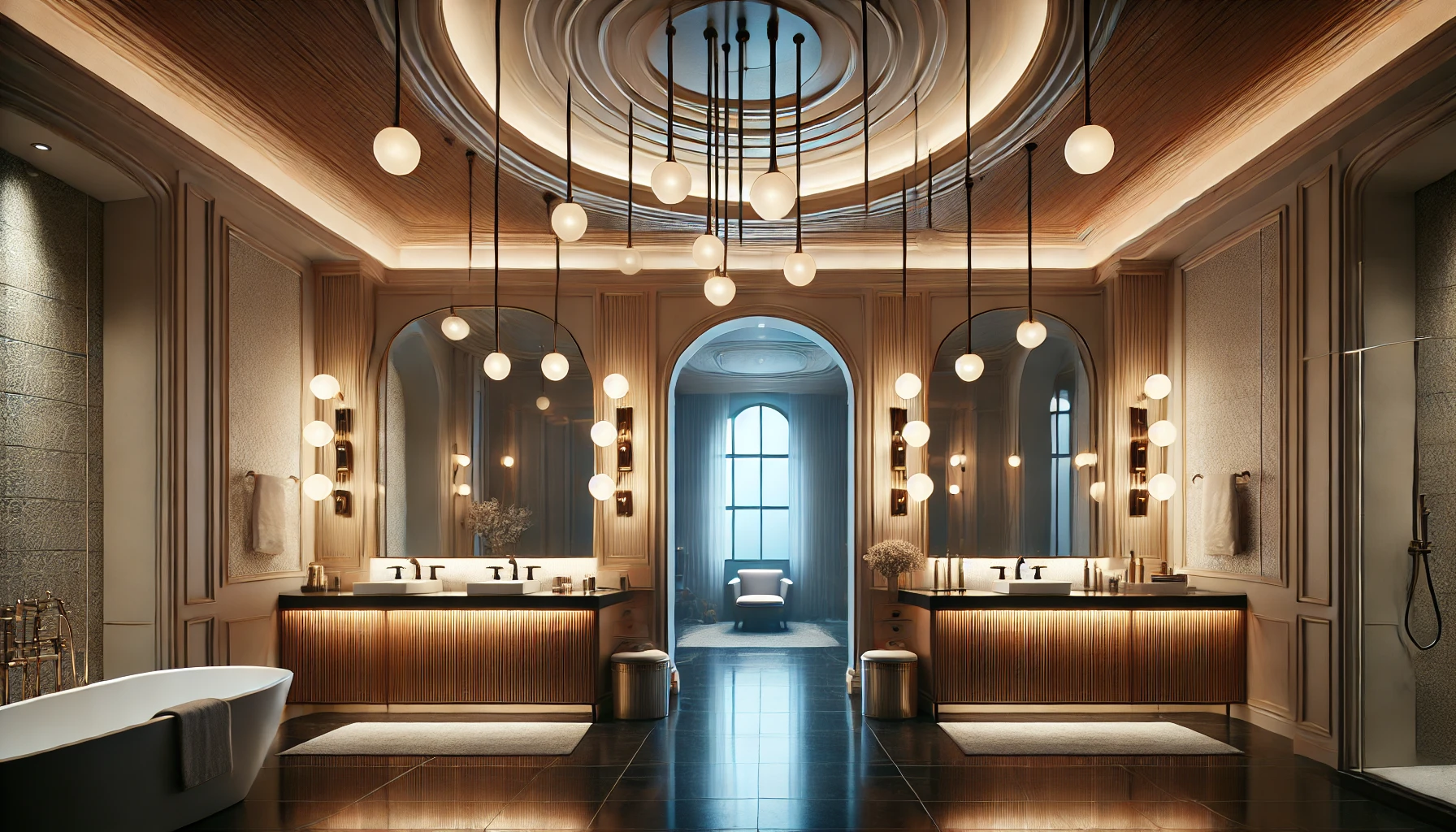
Lighting is an essential element in bathroom design that often goes overlooked. A well-lit bathroom not only enhances the functionality of the space but also sets the tone and mood, transforming it into a relaxing retreat. Whether you’re applying makeup, shaving, or simply unwinding in the bath, the right lighting setup is crucial to achieving the desired ambiance and practicality.
Task lighting is perhaps the most important type of lighting in the bathroom. This refers to the lighting around the vanity area, where precise illumination is needed for grooming tasks. Vanity lighting should be bright and evenly distributed to prevent shadows on the face. Sconces placed on either side of the mirror are a popular option for vanity lighting, as they provide balanced light that helps eliminate shadows. Alternatively, a lighted mirror with integrated LEDs can provide a sleek, modern look while offering excellent task lighting.
In addition to task lighting, ambient lighting is essential for creating a warm, inviting atmosphere in the bathroom. This type of lighting provides overall illumination for the space and can be achieved through ceiling-mounted fixtures, recessed lights, or even chandeliers in larger bathrooms. Ambient lighting should be soft and diffused to create a comfortable, relaxing environment.
Accent lighting is another layer that can add depth and dimension to your bathroom design. This type of lighting is used to highlight specific features, such as architectural details, artwork, or a statement bathtub. LED strip lights under cabinets or along the edges of mirrors can create a subtle glow that enhances the overall design of the space.
If your bathroom has natural light, it’s important to take advantage of it. Large windows or skylights can flood the space with natural light during the day, reducing the need for artificial lighting and creating a bright, airy atmosphere. However, it’s also important to have adjustable artificial lighting for evening use.
Storage Solutions for a Clutter-Free Space
Maximizing Storage in Small Bathrooms

Storage is a critical aspect of bathroom design, especially in small spaces where clutter can easily accumulate. A well-organized bathroom not only looks cleaner but also functions more efficiently, allowing you to find what you need without hassle. Fortunately, there are many creative storage solutions that can help maximize the space in your bathroom while maintaining a stylish and clutter-free environment.
One of the most effective storage solutions for small bathrooms is built-in shelving. Recessed shelves can be installed in the walls of your shower or vanity area, providing storage for toiletries, towels, and other essentials without taking up floor space. These shelves can be customized to fit your design aesthetic, whether you prefer sleek, modern lines or a more traditional look with decorative molding.
Another popular option for maximizing storage is a wall-mounted vanity. These vanities float above the floor, creating the illusion of more space while providing ample storage for toiletries and bathroom accessories. Wall-mounted vanities are available in a variety of sizes and styles, making them a versatile option for any bathroom design.
If you have a small bathroom, it’s important to make use of vertical space. Tall cabinets or open shelving units can provide additional storage without taking up valuable floor space. These units can be used to store towels, toiletries, and other bathroom necessities, keeping them within easy reach while freeing up counter space.
Over-the-toilet storage units are another great option for small bathrooms. These units are designed to fit over the toilet, providing additional storage for towels, toiletries, and decorative items. Over-the-toilet storage units come in a variety of styles, from sleek, modern designs to more traditional, decorative options.
Bathroom Fixtures and Accessories
Choosing Stylish and Functional Fixtures
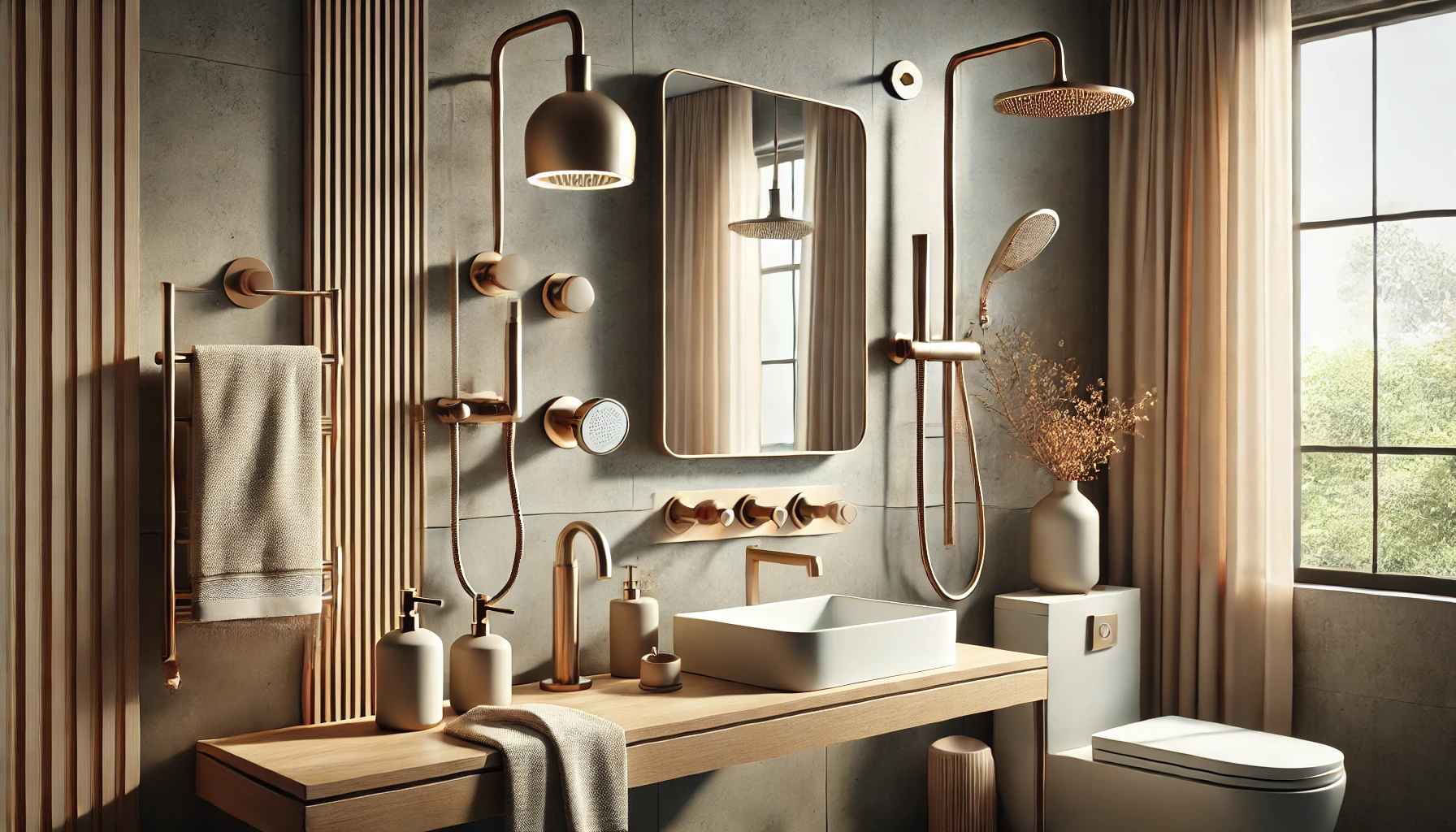
The fixtures and accessories you choose for your bathroom can have a significant impact on both its functionality and overall design. From faucets and showerheads to mirrors and towel racks, these elements are the finishing touches that tie the room together. In this section, we’ll explore how to select stylish and functional fixtures that complement your bathroom design while enhancing its practicality.
When selecting faucets, it’s important to consider both style and performance. Modern faucets come in a variety of finishes, including chrome, brushed nickel, matte black, and brass. Chrome is a classic, versatile option that works well in most bathroom designs, while matte black and brass add a more contemporary, high-end look. It’s also important to consider water efficiency—look for faucets with the WaterSense label, which indicates that they meet EPA standards for water conservation.
Showerheads are another key fixture in bathroom design. Rain showerheads are a popular choice for creating a spa-like experience, while handheld showerheads offer greater flexibility and ease of use. Dual shower systems, which include both a fixed showerhead and a handheld option, are becoming increasingly popular for their versatility. As with faucets, it’s important to choose a water-efficient showerhead to reduce water usage without sacrificing performance.
Mirrors are an essential accessory in any bathroom. In addition to serving a practical purpose, mirrors can enhance the overall design of the space. Frameless mirrors with built-in LED lighting offer a sleek, modern look, while decorative mirrors with ornate frames add a touch of elegance and personality. For smaller bathrooms, consider using a large mirror to reflect light and make the space feel more open.
Towel racks, hooks, and bars are small accessories that can make a big difference in the functionality of your bathroom. These items are available in a variety of finishes to match your fixtures, and they can be placed strategically to keep towels within easy reach. Heated towel racks are a luxurious option that adds both comfort and style to your bathroom.
Advantages of a Well-Designed Bathroom
Why Investing in Bathroom Design Pays Off
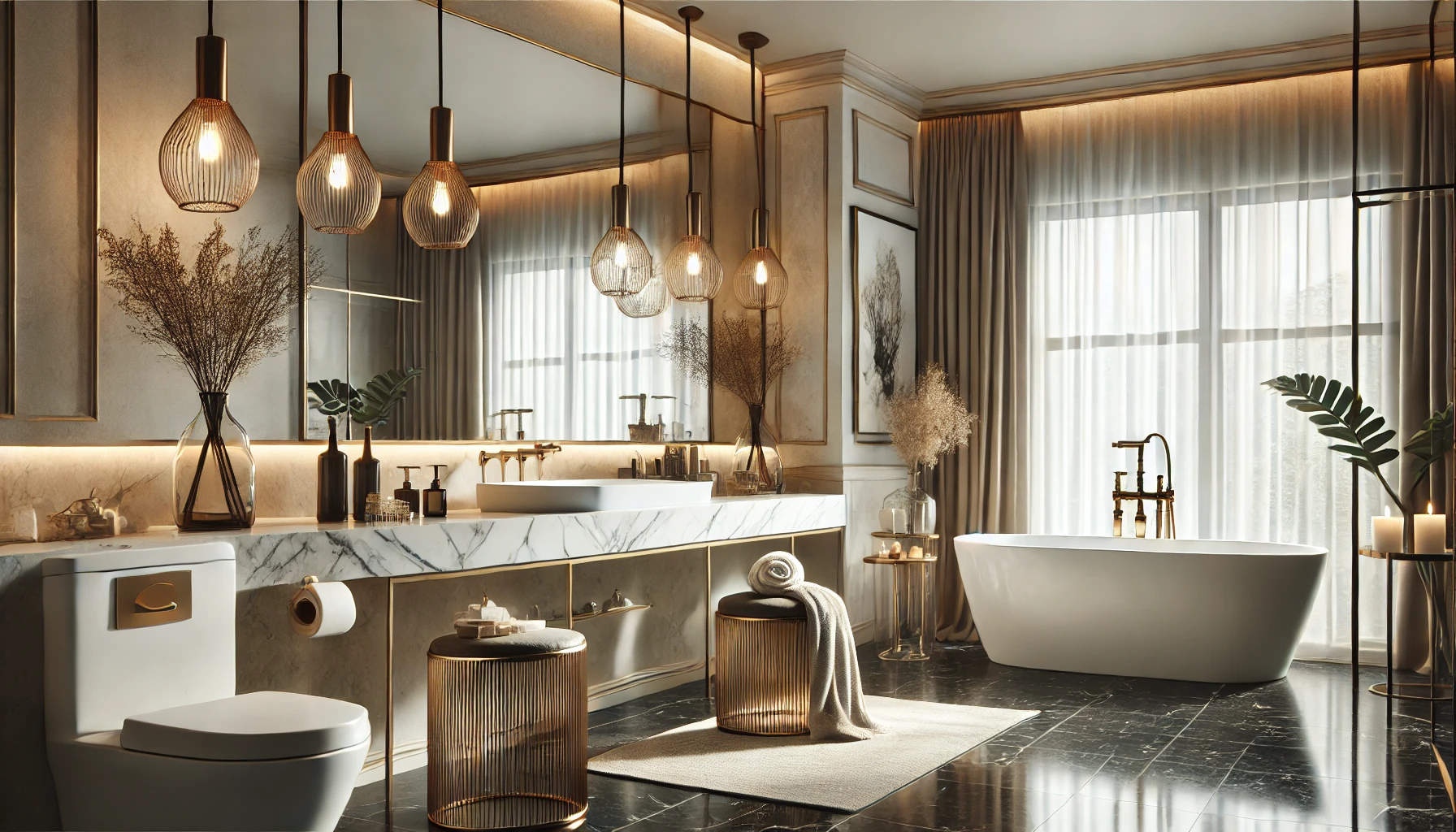
Investing in a well-designed bathroom comes with a multitude of benefits, both for your daily life and the value of your home. A thoughtfully designed bathroom not only enhances comfort and functionality but also improves the overall aesthetics of your living space. Whether you’re planning to stay in your home for years to come or preparing to sell, a well-designed bathroom is a valuable investment that pays off in several ways.
One of the primary advantages of a well-designed bathroom is improved functionality. A bathroom that is tailored to your needs makes daily routines more efficient and enjoyable. Whether it’s ample storage for toiletries, easy access to fixtures, or thoughtful lighting, a well-designed bathroom enhances the overall user experience. This is especially important in busy households where multiple family members may be using the bathroom at different times of the day.
A well-designed bathroom can also improve the overall comfort of your home. Features like heated floors, towel warmers, and rain showerheads create a spa-like atmosphere that allows you to unwind and relax after a long day. These small touches can make a big difference in how you feel about your bathroom and how you use the space.
In addition to improving daily life, a well-designed bathroom can increase the resale value of your home. Bathrooms are one of the most important rooms for potential buyers, and a modern, stylish bathroom can make a strong impression. Features like updated fixtures, energy-efficient lighting, and high-quality materials can set your home apart from others on the market.
Energy efficiency is another key advantage of a well-designed bathroom. By incorporating water-saving fixtures, such as low-flow toilets and faucets, and energy-efficient lighting, you can reduce your home’s environmental impact and save money on utility bills. Many modern bathroom designs also include eco-friendly materials, such as recycled tiles and sustainable countertops, which contribute to a greener home.
Another advantage of a well-designed bathroom is the potential for better organization and storage. Bathrooms are often small spaces, and without proper storage solutions, they can quickly become cluttered and disorganized. Thoughtful storage options, such as built-in shelves, cabinets, and vanities, help keep the space tidy and make it easier to find what you need. This not only improves the aesthetics of the bathroom but also reduces stress and frustration in your daily routine.
Eco-Friendly Bathroom Designs
Sustainable and Energy-Efficient Solutions
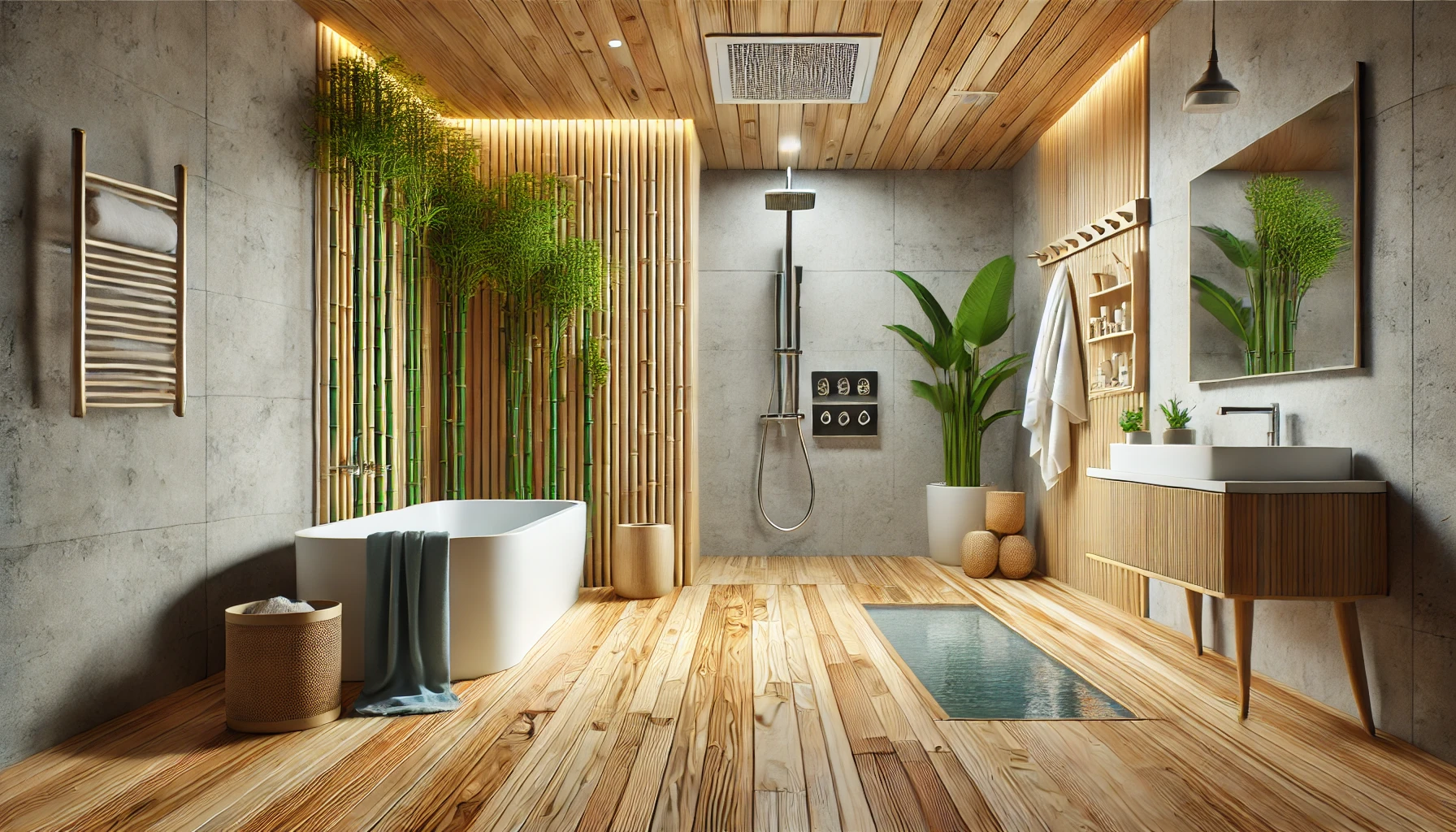
As sustainability becomes a growing priority in home design, eco-friendly bathroom designs are gaining popularity. Incorporating sustainable and energy-efficient solutions into your bathroom not only reduces your environmental footprint but also enhances the functionality and aesthetics of the space. In this section, we’ll explore how to create an eco-friendly bathroom that aligns with modern sustainability standards while maintaining a stylish and functional design.
One of the most effective ways to create an eco-friendly bathroom is by choosing water-saving fixtures. Low-flow toilets, faucets, and showerheads use significantly less water than traditional fixtures, helping to conserve water without sacrificing performance. Many of these fixtures are designed to deliver a strong, consistent flow while using less water, making them both eco-friendly and practical.
Energy-efficient lighting is another key element of an eco-friendly bathroom. LED lights use far less energy than traditional incandescent bulbs and last much longer, making them a smart choice for any bathroom design. Additionally, installing dimmer switches or motion sensors can further reduce energy consumption by allowing you to adjust the lighting as needed.
Sustainable materials are also an important consideration in eco-friendly bathroom design. Recycled glass tiles, bamboo flooring, and countertops made from reclaimed wood or recycled materials are all eco-conscious choices that can add both style and sustainability to your bathroom. These materials are not only environmentally friendly but also durable and aesthetically pleasing, making them a great choice for any modern bathroom.
Another way to reduce your environmental impact is by incorporating energy-efficient appliances, such as tankless water heaters or energy-saving ventilation fans. Tankless water heaters heat water on demand, rather than storing hot water in a tank, which can significantly reduce energy usage. Energy-efficient ventilation fans help improve air quality by reducing moisture and humidity, while using less energy than traditional models.
Incorporating natural light is another eco-friendly strategy that can enhance the overall ambiance of your bathroom. Skylights or large windows can help reduce the need for artificial lighting during the day, while also creating a bright and airy atmosphere. If your bathroom doesn’t have access to natural light, consider using light tubes or solar tubes, which bring natural light into the space through reflective tubing.
Incorporating Technology in Bathroom Design
Smart Bathrooms for the Modern Home
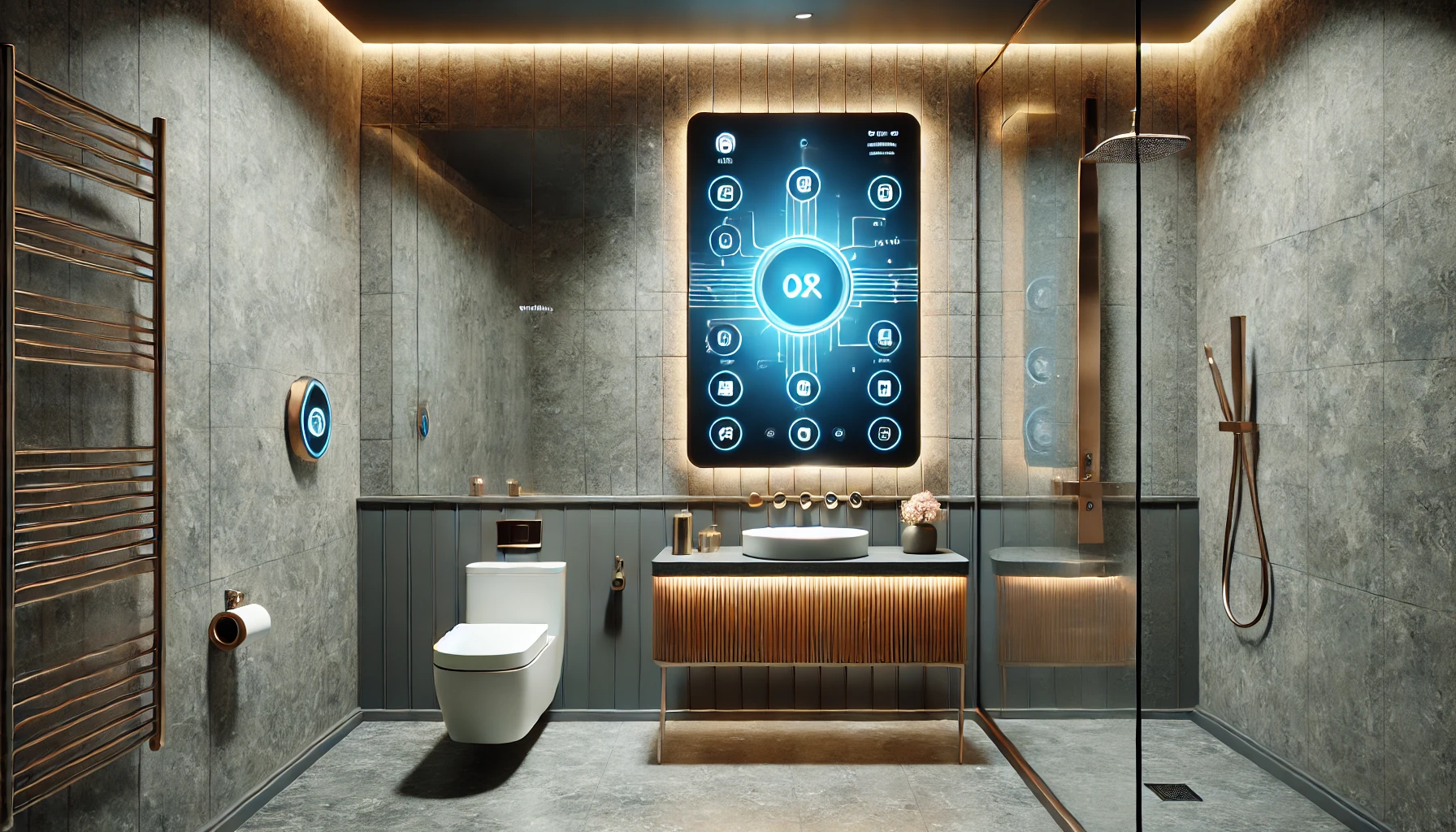
As technology continues to advance, it’s becoming more integrated into every aspect of our lives, including bathroom design. Smart bathrooms are a growing trend that combines modern technology with luxurious design to create a space that is both functional and enjoyable. From voice-activated lighting to high-tech shower systems, incorporating technology into your bathroom can elevate your daily routine and add a touch of luxury to your home.
One of the most popular technological innovations in modern bathrooms is the smart mirror. These mirrors come with built-in LED lighting, touchscreen controls, and even Bluetooth speakers, allowing you to play music, check the weather, or adjust the lighting with just a touch. Some smart mirrors also include anti-fog technology, ensuring a clear reflection even in steamy conditions. These mirrors can make your morning routine more enjoyable and efficient.
Voice-controlled lighting is another smart feature that can enhance the functionality of your bathroom. With voice-activated systems like Google Assistant or Amazon Alexa, you can adjust the brightness, change the color temperature, or even set mood lighting without having to touch a switch. This hands-free control is particularly useful in the bathroom, where wet hands and electrical switches are not always a good combination.
Smart showers are also becoming increasingly popular in modern bathroom design. These systems allow you to control the temperature, water pressure, and even the duration of your shower from a smartphone app or voice command. Some smart showers also feature personalized settings that remember your preferences, ensuring the perfect shower experience every time. This technology not only provides convenience but also helps conserve water by allowing you to pre-set durations or pause the water flow when needed.
Heated floors are another luxurious technology that can be incorporated into your bathroom design. Radiant floor heating systems use electric coils or water-filled tubing to warm the floor, providing a cozy, comfortable surface underfoot. Heated floors are especially appreciated in colder climates and can make getting out of the shower or bath a much more pleasant experience. This modern technology can make your bathroom feel like a spa retreat at home.
Start Designing Your Dream Bathroom Today
Taking the First Steps Toward Your Bathroom Transformation
Now that you’ve explored the latest trends, materials, and technologies in bathroom design, it’s time to take the first steps toward transforming your own space. Whether you’re planning a complete renovation or simply updating a few key features, the journey to designing your dream bathroom begins with careful planning and consideration. A clear vision, proper budget planning, and creative ideas can go a long way in making your project a success.
The first step is to assess your needs and priorities. What are the most important features you want to include in your new bathroom? Is it a luxurious soaking tub, a spacious walk-in shower, or ample storage for toiletries and towels? By identifying your must-haves, you can begin to create a vision for your bathroom that reflects both your style and functional needs. Defining these priorities early on will help guide all of your decisions, from layout to materials and fixtures.
Next, consider your budget. Bathroom renovations can vary greatly in cost depending on the materials, fixtures, and level of customization you choose. Setting a realistic budget early in the process will help you make informed decisions and avoid overspending. Keep in mind that investing in high-quality materials and fixtures can pay off in the long run by increasing the value of your home and reducing maintenance costs.
Once you have a clear vision and budget in mind, it’s time to start working on the layout. As we discussed earlier, a well-designed layout is crucial for maximizing space and functionality. Whether you’re working with a small powder room or a large master bath, the layout should flow seamlessly and make the most of the available space. If you’re unsure where to start, consider consulting with a professional designer who can help you create a layout that meets your needs.
Choosing the right materials is another important step in the design process. From durable tiles and countertops to stylish fixtures and accessories, the materials you select will define the look and feel of your bathroom. Be sure to choose materials that are not only beautiful but also practical for a moisture-rich environment. Don’t be afraid to mix and match textures and finishes to create a unique and personalized design.
Lighting and storage are also key elements that should not be overlooked. Proper lighting can enhance the functionality of your bathroom while creating a warm and inviting atmosphere. Storage solutions, such as built-in cabinets and shelving, will help keep the space organized and clutter-free. These small details can make a big difference in how your bathroom looks and functions.
Finally, don’t forget to incorporate personal touches that make your bathroom feel like your own. Whether it’s a piece of artwork, a decorative mirror, or a few plants, these elements can add character and charm to your design. By blending style, functionality, and personalization, you can create a bathroom that is not only beautiful but also uniquely yours.
With the right planning and design, your dream bathroom is within reach. Start your journey today, and transform your bathroom into a space that brings joy and relaxation to your daily routine. Happy designing!
 Home Designing Get expert home decor tips and design inspiration at HomeDesigning.blog. Transform your living spaces with trending styles and DIY ideas!
Home Designing Get expert home decor tips and design inspiration at HomeDesigning.blog. Transform your living spaces with trending styles and DIY ideas!
